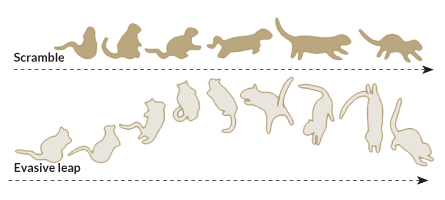Why ground squirrels go ninja over nothing
Rodents recently spooked by snakes wave their tails as wariness signal

SECRET NINJA A California ground squirrel is much more capable than it looks when it comes to battling rattlesnakes that lurk to feast on baby-squirrel nuggets.
das_miller/Flickr, (CC BY-NC-SA 2.0)
Whole scientific careers have gone into understanding why a harmless handful of fluff like a California ground squirrel taunts rattlesnakes. Now Rulon Clark and his team at San Diego State University are exploring the puzzle of why the squirrels also seem to taunt rocks, sticks and the occasional shrub.
On spotting a snake, a California ground squirrel (Otospermophilus beecheyi) stares and sniffs, or if the snake is uncoiled, may even kick sand at it. And in bursts, the squirrel flags its tail left and right “like a windshield wiper,” Clark says.
A rattler can strike a target 30 centimeters away in less than 70 milliseconds. But ground squirrels twist and dodge fast enough to have a decent chance of escape. Also, adult squirrels from snake country have evolved some resistance to venom. So taunting is worth the risks as a signal to neighboring squirrels and to the snake that its ambush attempt has been discovered. After getting publicly and lengthily squirreled, snakes often just slip away.
Yet the squirrels also nyah-nyah tail flag at places where snakes might be but aren’t. To see if flagging indicates wariness, Clark and his colleagues built a squirrel startler that shoots out a cork using the classic spring that launches gag snakes out of cans (see video below).
At spots with no sign of real snakes, squirrels mostly nibbled seeds in apparent tranquility with only a rare tail flag. The pop of a cork typically sent these squirrels scampering off on four speed-blurred paws.
But when a squirrel revisited a worrisome spot where it had recently seen a snake (tethered by researchers), there was more and faster tail flagging. When the cork popped, more than half the squirrels flipped. “All four legs came off the ground and their tails were torquing around,” Clark says.
Those just-in-case tail flags could tell a still-hidden snake that this is one wary squirrel ready for extreme body displacement, Clark and Breanna Putman report in an upcoming Behavioral Ecology. Earlier work showed that frequent flaggers often escaped attacks. So flagging may persuade a smart snake to wait for an easier target.
Credit: Rulon Clark/YouTube







